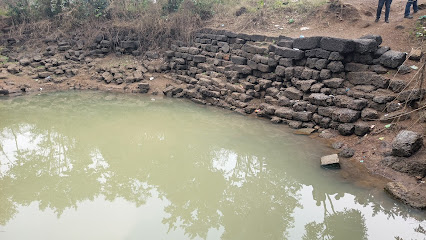No journey of a travel enthusiast that will reopen eyes to explore history among the wild without a trip to Chudanga Gada fort. The fort is located at a distance of 14 kms north to Bhubaneswar in Baranga village along the banks of river Prachi.
What History Says
As per the belief of historians it was the Gajapati rulers who built forts or katakas in order to strenghtem their empire. This practice has been recorded in the Madala Panji which is entitled to record the historical events of ancient Odisha, mostly related to the rituals of Lord Jagannath and Jagannath Temple.
Talking about katakas, ancient Odisha jad numerous of them such as the Amaravati kataka, Choudwar kataka, Varanasi kataka, Jajpur kataka, Teligarh as well as the most notable of them, Chudanga Gada. The Chudanga Gada near Baranga, in earlier times, was referred as Sonargarh.

Construction of the Fort
The Chudanga Gada was built during 11th century by the rulers of the Ganga dynasty. Some historians also believe that Buali Gada fort, located adjacent to the Chodanga Fort was also constructed by Chodaganga Dev sometime in between 1078 and 1147. It has been named after the famous ruler Chodaganga Dev.
The fort is located near the premises of the sanctuary of Chandaka Dampara. At present, near the reserve forest of the Godibari entrance, along with various archaeological sites, the remains of the fort can be seen. Presently, the site has been taken up by the Archaeological Survey of India for its conservation.
You can read our another post on The Leaning Temple of Huma: A Unique Architectural Wonder
Interiors of the Fort
Once inside the fort, one can see a beautiful palace, with 16 humongous rooms, shrines and a granary. The interior of the fort has been built in the famous Kalinga architectural prospects. Numerous water bodies along with huge laterite rocks can be seen along the periphery of the Chudangq Gada fort.
The 16 rooms consisting palace, also known as the Solapuri Palace, is spread vastly across an area of 25 acres. In addition the remains of the fort extend over an area of 386×217 metre squares. Even though the Solapuri Palace consists of 16 rooms, only nine blocks out of them have been explored.
While the largest block measured approximately 141×121 metre squares with a height of 4 metres and 2 metres thick, the smallest of the blocks measures 42×34 square meters with a height of 1.3 metres and 1.8 metres. On the constructions front, large sized dressed sand stones and laterite blocks had been put to use. These blocks measure 1×1.3 metres on an average.
Preserved Remains
Today, one can see architectural remains consisting of fragments of pillars, lintels, Chandrasilas ( temple fragments) and various shaped blocks. There is a temple made up of sandstone, which now remains as ruins, near the fort. Chudanga jhil locally called the Chaula Ghara or the granary whose land has been developed for cultivation is located towards the north eastern corner of the fort.
Nearest Places to Visit
1. Nandankanan Zoological Park: Nandankanan zoo which is the first zoo in India to join the World Association of Zoos amd Aquariums(WAZA) is a major tourist attractions of Odisha. The zoo is located near the Chudanga Gada fort at a distance of only 1.5 kms.
2. Chandaka Forest: The Chandaka Dampara Sanctuary is located at a distance of only 0.5 kms from Chudanga Fort. This sanctuary is nestled along the uplands of Khordha in the rich biotic region of Eastern Ghats. It was designated as the elephants reserve in the year 1982.
How to Reach
By Air: The nearest airport is the Biju Pattnaik International Airport.
By train: Cuttack is well connected by railways to all major cities across the state and outside of the state. But Baranga Railway Station is at distance of 9 kms south west of Cuttack.
More: Wanted to download Odishashop.com visit here
By Road: If one wishes to travel by road, he has to hire local taxis or cabs near Baranga on Mundali road. The Bhubaneswar- Cuttack road via Nandakanan and Baranga is the best suited road.
